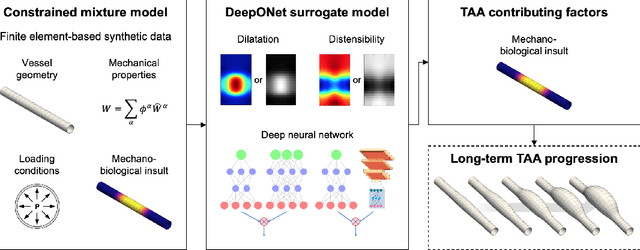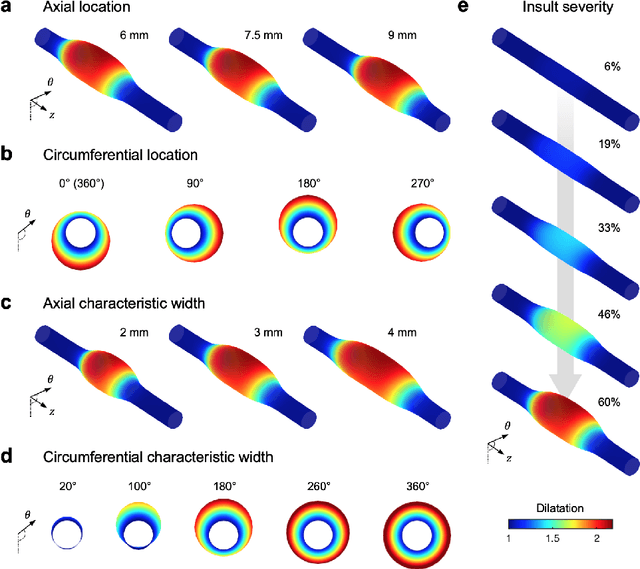David S. Li
Neural operator learning of heterogeneous mechanobiological insults contributing to aortic aneurysms
May 08, 2022



Abstract:Thoracic aortic aneurysm (TAA) is a localized dilatation of the aorta resulting from compromised wall composition, structure, and function, which can lead to life-threatening dissection or rupture. Several genetic mutations and predisposing factors that contribute to TAA have been studied in mouse models to characterize specific changes in aortic microstructure and material properties that result from a wide range of mechanobiological insults. Assessments of TAA progression in vivo is largely limited to measurements of aneurysm size and growth rate. It has been shown that aortic geometry alone is not sufficient to predict the patient-specific progression of TAA but computational modeling of the evolving biomechanics of the aorta could predict future geometry and properties from initiating insults. In this work, we present an integrated framework to train a deep operator network (DeepONet)-based surrogate model to identify contributing factors for TAA by using FE-based datasets of aortic growth and remodeling resulting from prescribed insults. For training data, we investigate multiple types of TAA risk factors and spatial distributions within a constrained mixture model to generate axial--azimuthal maps of aortic dilatation and distensibility. The trained network is then capable of predicting the initial distribution and extent of the insult from a given set of dilatation and distensibility information. Two DeepONet frameworks are proposed, one trained on sparse information and one on full-field grayscale images, to gain insight into a preferred neural operator-based approach. Performance of the surrogate models is evaluated through multiple simulations carried out on insult distributions varying from fusiform to complex. We show that the proposed approach can predict patient-specific mechanobiological insult profile with a high accuracy, particularly when based on full-field images.
 Add to Chrome
Add to Chrome Add to Firefox
Add to Firefox Add to Edge
Add to Edge